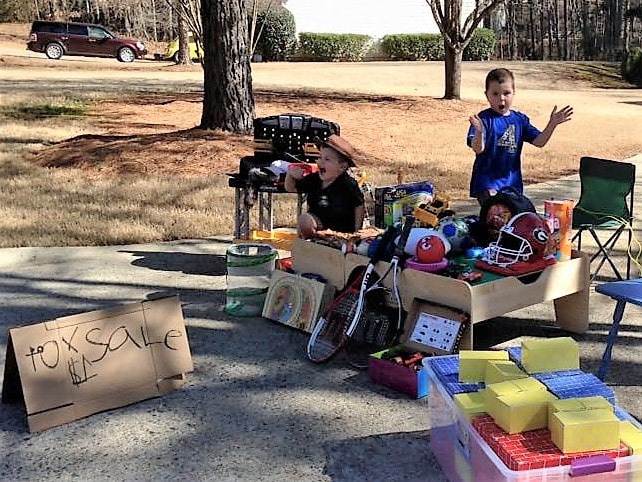Marriage and budgets are tough enough. Throw a few kids in the mix, and you may find yourself feeling like your money is slipping away. Kids come with a lot of needs and wants and no ability to produce income. It is a both a joy and a challenge to meet their needs and to teach them how to begin to meet their own. Including children in conversations about money and budgeting prepares them to make responsible choices later in life, it teaches them valuable lessons about hard work and delayed gratification, and it takes some of the burden off you as parents. Here are a few ways to loop them in.
Share your budgeting work with them
You have put in a lot of work on making a budget. You started by talking about your reasons why—your goals for the future and your values. You have identified needs and wants. You have considered ways to meet your needs for less money. You have ranked your wants and considered which ones you might be willing to give up to meet a future goal. Share as much of this as possible with your kids. Talk to them about your long terms goals and what you are saving for. Let them share in your journey to accomplishing those goals Let them know that you are committed to giving them what they need, as well as some of what they want. Share with them some of the choices that you have made. Then, give them a chance to make some choices.
Pay them an allowance
I am a big proponent of paying kids an allowance when they get to an age to understand it (mine are six and nine and they both benefit from the allowance in different ways). We have worked with Sharon Egan, an amazing parenting coach over the past year (parenting is hard!) and she taught us to separate the allowance from chores. Check out her article about why children need to have responsibilities at home and why they should not be tied to their allowance. Also, you may want to read this NPR article about how to raise kids who willingly help out around the house. Then, consider paying your children an allowance. Here are two tips we have learned in paying an allowance to our kids:
1. Figure out how much you spend on extra stuff for them on a weekly basis, and pay them about 70% of that amount. Then stop buying them stuff. We figured that we spent about $10 per week on each of my kids on impulse purchases—a lego keychain here, a pack of gum there—it added up. So now instead we pay them each $7 per week and we do not buy them any of their “wants.” This gives them the power to make choices and it takes the burden off us to decide when to say yes and when to say no. The answer is always, “Sure if you have the money and you want to spend it on this!”
2. Let them keep track of their money and choose whether to spend it or save it. We gave each boy a blank check register where they can record their allowance, any expenditures, and their balance. Our six-year-old often spends the money soon after he gets it. Our nine-year-old saved up almost $200 and then spent it in chunks on a lunchbox, a video game, and other things that he might have previously begged us for. He got to experience what it feels like to see that balance creep down toward $0 and now he is working to build it up again.
This has been an amazing teaching tool. Now they have a much better sense of what is a good value and what is too much. Having to make choices has helped them think about what they really want and what they can live without. It has also gotten them thinking about how to make more money. Our nine-year-old had a toy sale a couple of years ago to generate some cash for a new bike when his knees started hitting the handlebars of his old one. We could have afforded to buy him a bike, and we would have been willing to (bicycles over video games any day!), but he had the idea of raising the money himself and we were more than happy to be supportive. He got rid of a bunch of old toys, raised about $50, and then chose the least expensive bike at the store. Win, win, win!

This tool can work with older children and teenagers, too, though the numbers will probably be bigger. Most middle and high school students in my area have smart phones and data plans. They play sports, drive cars, go to fun events, and wear nice clothes. If that is true for your family, you are probably spending a couple hundred dollars a month on these things for each of your teens. What if instead you gave them 70% of that amount in cash and let them make some choices? What if you never again had to answer the question, “Will you buy me this?”
Here are the benefits we see in using an allowance:
1. Lower overall family expenditures.
2. Parents don’t have to decide when to say “yes” and when to say “no” to discretionary purchases.
3. Kids learn about making choices and get control over whether to save or spend.
4. Kids learn about the value of a dollar and how much things are really worth to them.
5. Kids practice keeping track of income, expenses, and balance—a valuable life skill that all adults need.
We would love to hear what you think. How does paying an allowance work for your family?
Did you catch our series about budgeting with your spouse? Part I is here.


